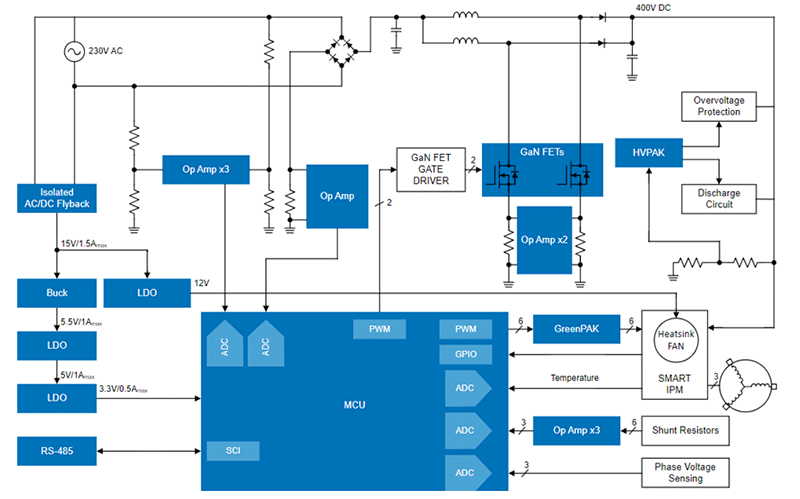In an era where automation and the rising number of inverters are revolutionizing industries and households alike, the pursuit of a comfortable lifestyle has become increasingly dependent on efficient and reliable power management solutions. As more devices and systems integrate into our daily lives, ensuring optimal energy usage is crucial for both economic and environmental reasons. This demand drives the advancement of power control and conversion technologies, which play a key role in enhancing power efficiency and performance.
Power factor is a key determinant of electrical system efficiency, as a higher power factor signifies less energy wasted in the form of reactive power. By optimizing the power factor, businesses and households can significantly reduce energy consumption and costs, leading to more sustainable power usage. In some regions, power factor correction (PFC) is required by law to ensure efficient energy use and reduce strain on the electrical grid.
The majority of switching power supplies and inverters today use conventional PFC topologies, leveraging their simplicity, low cost, and reliability. The common feature of these traditional PFC solutions is the usage of Silicon MOSFETs or insulated-gate bipolar transistors (IGBTs). The common problem is their switching losses and heat dissipation which become challenging at higher power and smaller sizes.
As the market drives towards increasingly smaller devices capable of delivering higher power at lower costs, GaN FETs are starting to play an important role. The performance achievable with GaN FETs, including efficiency and size improvements, can have a positive impact on total system costs.
This Renesas solution demonstrates how easily system efficiency and power density can be increased simply by replacing Silicon devices with Renesas GaN FETs (See the diagram below).

The key component in this system is the MCU, which ensures stable and reliable system performance. Nowadays, the MCU core is becoming commonplace, with value increasingly provided by peripherals that reduce the need for external components and streamline power circuit control.
Renesas offers a broad portfolio of dedicated motor control MCUs and MPUs.
Thanks to the unique features of GaN FETs, improvements to overall system performance are readily noticeable:
- Increased efficiency in hard and soft switched circuits
- Increased power density
- Reduced system size and weight
- Simpler heat dissipation designs
- Lowered overall system cost
The next very important advantage of Renesas GaN FETs is that most of the devices can be driven with commonly used gate drivers. This feature allows easy system upgrades which dramatically increase efficiency.
Though GaN FETs are the stars of today’s power electronics, it should not be forgotten that they work in combination with other parts to improve the overall performance of a system. Notably, logic components are often overlooked or considered last. Their primary disadvantage is that they occupy more PCB space than their cost justifies, and multiple components are typically required. We tackle this challenge by utilizing Renesas’ unique programmable mixed-signal devices - GreenPAK™ and HVPAK™. In this solution, HVPAK is used for overvoltage protection and discharge control, a relatively small device that works in standalone mode containing complex state machines ensuring reliable hardware functioning. The GreenPAK enables simple and reliable PWM overlap protection in hardware if the selected MCU doesn’t have this functionality.
Looking at overall trends, motor control and inverter systems are also becoming smaller and handling higher power. This underscores the demand for solutions that increase power density while simultaneously minimizing the total component count and solution size.
To learn more, see our "1.2kW High-Voltage Inverter with GaN-based Power Factor Correction (PFC)" winning combination, and to find out more about our other winning combinations and how they can help you get to the market more quickly, visit https://renesas.com/win.
